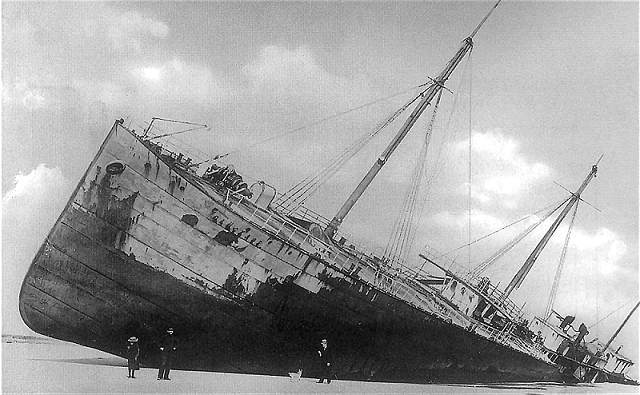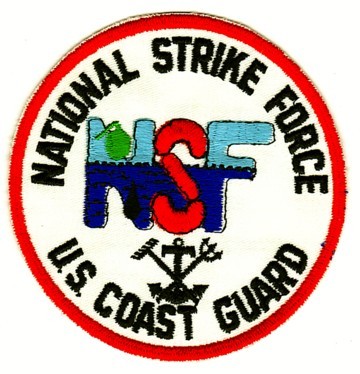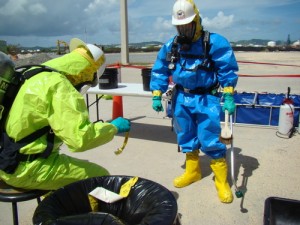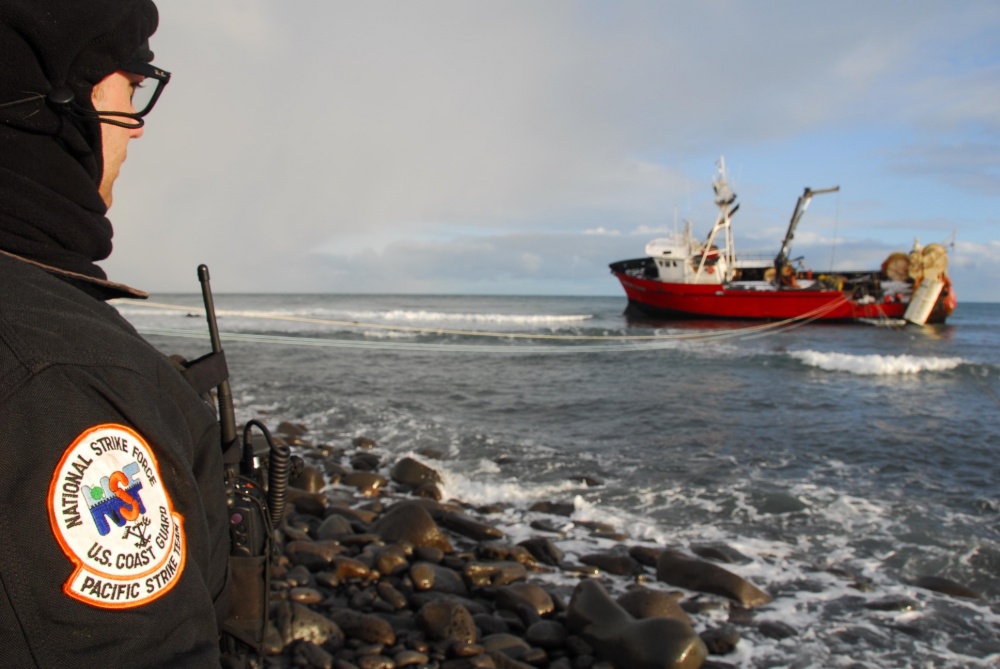The United States Coast Guard has been a steward of the nation’s maritime environment for over 200 years. For over 50 of those years, the National Strike Force has helped protect the American people and the environment from the impacts of dangerous chemical discharges and hazardous material releases, and other natural and manmade disasters.
The Coast Guard became the nation’s environmental protector in 1822. That year, Congress tasked the U.S. Revenue Cutter Service with monitoring federal forest preserves that yielded ship timber for building Navy warships. During the 1800s, coal had been the fuel cargo commonly carried by merchant ships, but this solid fuel failed to pollute water like chemicals. In 1885, construction of the first purpose-built oil tanker Glückauf (German word for “good luck”) ushered in a new era of bulk shipping of chemicals and oil products. Ironically, in 1893, the Glückauf also marked the beginning of U.S. oil spill history, when she came ashore at Fire Island off Long Island.

During the 20th century, oil and chemical shipping grew in importance and liquid petroleum products prevailed as ship fuel and cargo. The Coast Guard’s role in oil and chemical spill response officially began in 1924, when Congress passed the first Oil Pollution Act. This act provided federal statutes that regulated the discharge of fossil fuels from seagoing vessels.
During World War II, the federal government paid little attention to oil spills in the war zone. However, after the war, large chemical spills and hazardous waste events began to occur regularly. These included the Torrey Canyon oil spill in 1967 and the fires burning on the surface of Cleveland’s polluted Cuyahoga River in 1969. With greater frequency of these environmental disasters in the 1960s and early 1970s came an increased need to regulate oil shippers and improve the nation’s response to large chemical spills.
The National Strike Force (NSF) was established in 1973 as a direct result of the Federal Water Pollution Control Act of 1972. It began with three 17-member strike teams, including the Atlantic Strike Team in Elizabeth City, North Carolina; Gulf Strike Team in Mobile, Alabama; and Pacific Strike Team in Novato, California. The NSF’s responsibility to support the federal government’s National Response System expanded under further environmental legislation, including the National Oil and Hazardous Pollution Contingency Plan (NCP) of 1972, Clean Water Act of 1977, Comprehensive Environmental Response, Compensation, and Liability Act of 1980, and the Graham-Ruddman Act in 1986.

Oil spill occurrences continued to rise into the 1980s and seemed to reach a climax in 1989. That year, the supertanker Exxon Valdez ran aground in Price William Sound, Alaska, spilling 11 million gallons of crude oil. It was the largest oil spill in U.S. waters up to that time. Fallout from the Exxon Valdez disaster led to passage of the Oil Pollution Act of 1990 (OPA 90). Enforcement of OPA 90 regulations became the Coast Guard’s single largest law enforcement assignment since Prohibition and the interdiction of illegal liquor in U.S. waters.
OPA 90 regulations required a more rapid response capability of the Coast Guard. The Atlantic Strike Team in Elizabeth City had been decommissioned in 1986, but it was re-commissioned in 1991 at Fort Dix, New Jersey. That same year, the National Strike Force Coordination Center (NSFCC) was stood up at Elizabeth City. Establishment of the NSFCC took the National Strike Force to a new level of oversight, organization and support. In addition, operational imperatives, legislation, and presidential orders and directives in the 2000s expanded and altered the NSF’s missions and capabilities even further to include new crisis leadership and management responsibilities.

Today’s National Strike Force is a globally available all-hazard response force comprised of 275 active duty, civilian, and Reserve personnel that provides response services to the Coast Guard, federal, state, tribal, and international governments. Its units now include the strike teams, NSF Coordination Center, Coast Guard Incident Management Assist Team (CG-IMAT) and Public Information Assist Team (PIAT). The PIAT was set-up at Headquarters in 1972 and moved to Elizabeth City with the establishment of the NSFCC in 1991. The CG-IMAT was stood-up in 2013 as an Atlantic Area unit; however, in 2016, became part of the National Strike Force with its offices in Norfolk, Virginia.
Since its founding in 1973, the NSF has responded to countless events associated with hazardous materials. These events include the 1990 Persian Gulf War and 2003 Operation Iraqi Freedom; numerous oil spills including the Exxon Valdez and Deepwater Horizon oil rig; aviation accidents such as the 1999 Egypt Air and 2000 Alaska Airlines crashes; 1986 Space Shuttle Challenger loss; 2001 Anthrax attacks; and the 9/11 terrorist attacks. The NSF has responded to other all-hazard events, including the 2010 Haiti earthquake, train derailments, alien migration interdiction operations on the Southwest border, cyber security, destruction of Syrian chemical weapons, Ebola scares, flood response rescue operations, California wildfires, and drug interdiction operations. Since its founding, the NSF has also responded to all domestic catastrophic storm events, including hurricanes Floyd, Katrina, Rita, Harvey, Irma, Maria, Florence, Michael and Helene.

In 2007, the Coast Guard established the Deployable Operations Group (DOG) to oversee specialized deployable units, such as Port Security Units, Law Enforcement Detachments and NSF teams. The DOG remained operational for six years. When it was disestablished in 2013, NSF teams and other Coast Guard specialized forces were consolidated under the command of the Coast Guard’s Atlantic and Pacific Areas as Deployable Specialized Forces or DSFs.
The U.S. Coast Guard has been the steward of the nation’s maritime environment for over 200 years. As a vital component of the National Response System and homeland security mission, the National Strike Force minimizes the human and environmental impact of oil discharges, hazardous material releases, Weapons of Mass destruction (WMD) incidents, and other natural and manmade disasters. The National Strike Force remains Semper Paratus, “always ready,” to expand and adapt its mission to ever-changing natural and manmade threats to the nation.
-USCG-